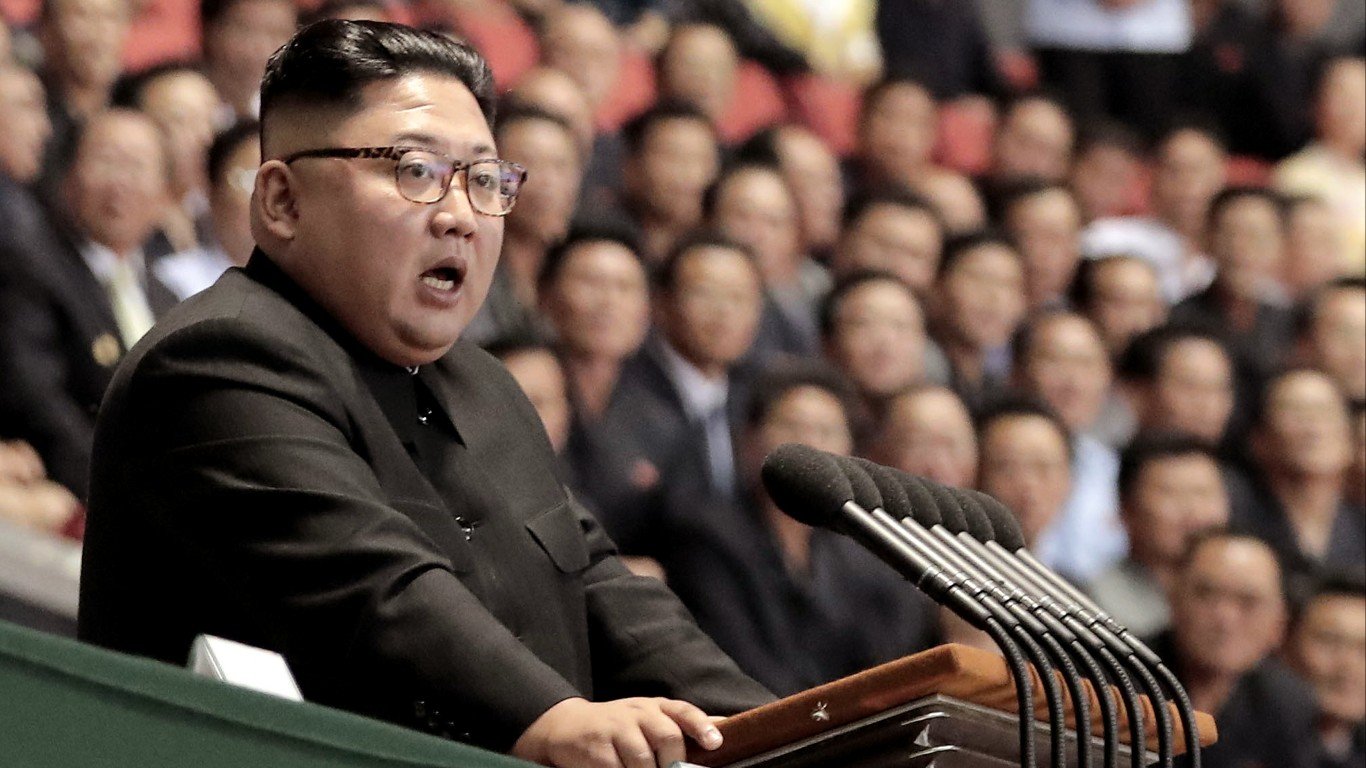
1. Supreme Leader Kim Jong-un
> Leader of: North Korea
> Took office: Dec. 28, 2011
> Estimated nuclear arsenal: 20
> First nuclear weapons test: 2006
Kim Jong-un is North Korea’s third head of state, following in the footsteps of his late father and grandfather, Kim Jong-il and Kim Il-sung. Since becoming North Korea’s supreme leader in December 2011 at age 27, Kim Jong-un has made North Korea a global threat more than his father ever did. The 38-year-old has embraced the “military first” doctrine, emphasizing development of the country’s nuclear and missile programme. Kim is one of only a few heads of state with the power to start a nuclear war.
Founded after a failed attempt to unite the Korean Peninsula by force in the mid-20th century, the North Korean regime has been built around the absolute power of its leaders and has a history marked by famine, censorship, and isolation from the global community. As a pariah state, the country’s nuclear weapons are central to its perception of itself as a powerful geopolitical force.
Recent provocations coming from Pyongyang have much of East Asia on high alert. So far this year, North Korea has tested 86 missiles – a record number – one of them crashing 35 miles off South Korea’s coast. These tests included intermediate range and intercontinental ballistic missiles fired towards or directly over Japan.
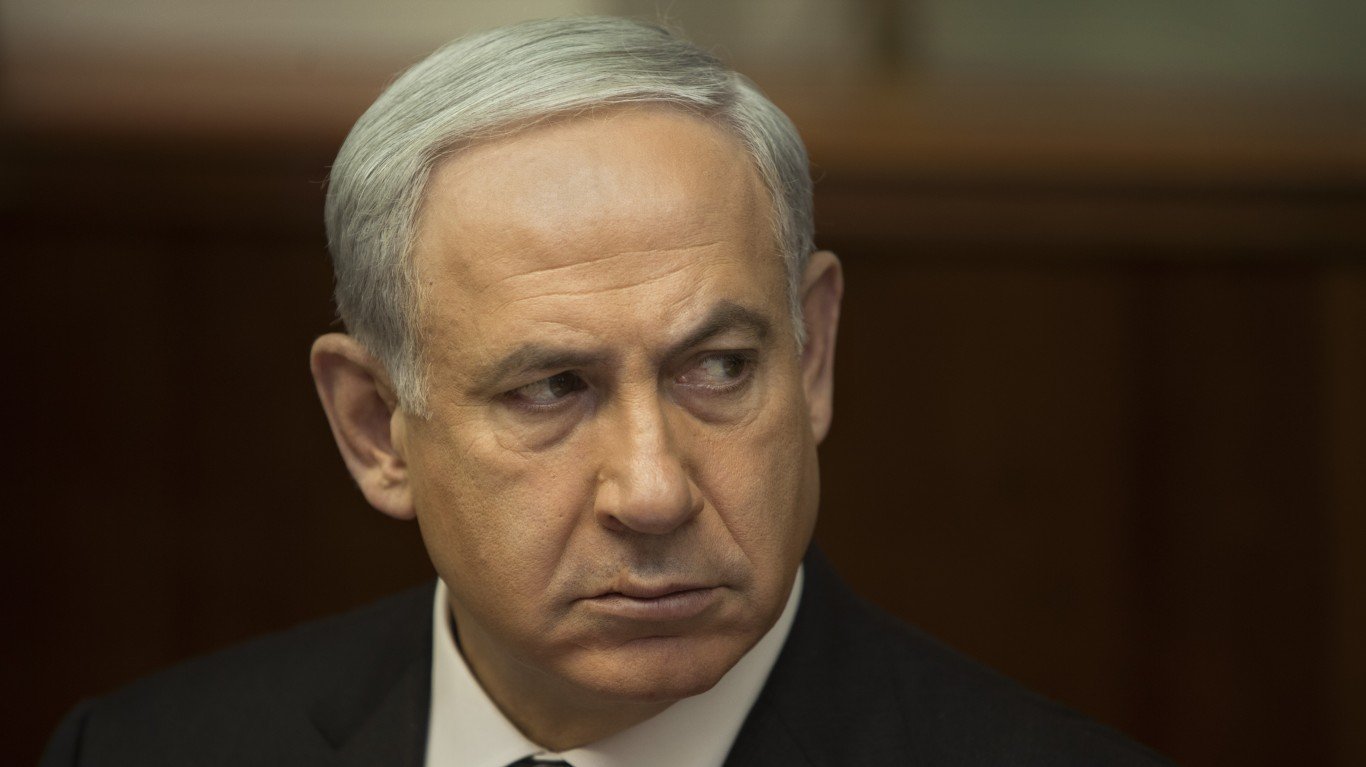
2. Prime Minister Yair Lapid / Benjamin Netanyahu
> Leader of: Israel
> Took office: Lapid took office July 1, 2022. Netanyahu was mandated to form a new government Nov. 13, 2022
> Estimated nuclear arsenal: 90
> First nuclear weapons test: Unknown, possibly 1979
Israel is the world’s only Jewish state, and its location among a number of hostile Islamic states in the Middle East all but necessitates a strong and constant defensive posture. Though Israel has never confirmed nor denied possession of nuclear weapons, it is universally acknowledged to be among the world’s nine nuclear powers, with an estimated 90 nuclear warheads.
Yair Lapid became prime minister on July 1, 2022 – just ahead of the November election – and he will remain PM until the new government is formed. After the election, Benjamin Netanyahu was mandated to form the next government. Netanyahu, who already served as prime minister for 15 years before he was unseated a year and half ago, is known for his hawkish views and strong objection to Iran’s nuclear weapons program. Israel’s status as a nuclear power is a point of contention for its regional adversaries, and is often cited as justification for Iran’s nuclear weapons development program.
While Israel has its own robust domestic weapons program, it also imports weapons from Europe and the United States. From 1999 to 2018, the U.S. committed approximately $50 billion in military aid to Israel, and pledged nearly $40 billion over the period from 2019 to 2028.
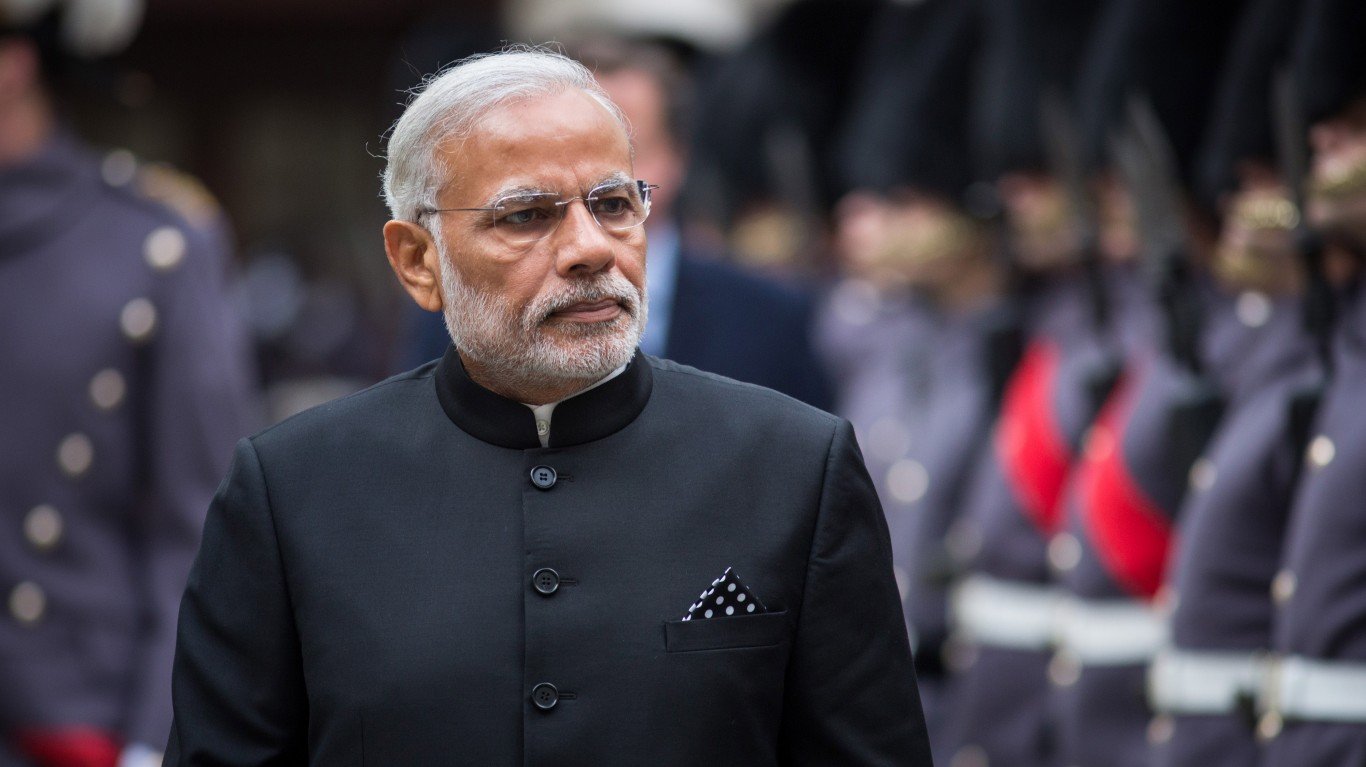
3. Prime Minister Narendra Modi
> Leader of: India
> Took office: May 26, 2014
> Estimated nuclear arsenal: 160
> First nuclear weapons test: 1974
Indian Prime Minister Narendra Modi controls an estimated 160 nuclear warheads, making him one of the most powerful men in world history. India conducted its first nuclear weapons test in 1974 and recently announced upgrades to its missile delivery system.
A British colony until 1947, the colony was split into India and Pakistan upon gaining independence – and an ongoing dispute over the Kashmir region with Pakistan makes the border one of the most dangerous in the world. The 2,167-mile border between India and China along the Himalayas has also been in dispute for over 80 years and is perhaps the more concerning of the two considering both countries’ regional and global significance.
Modi, who won back-to-back elections and is known for his nationalist stance, ordered a retaliation in 2019 in the Jammu and Kashmir region and in 2020 instructed the Indian army to stand its ground amid a deadly border skirmish with China. Since assuming office, Modi has embraced relations with the United States and regional with middle-sized powers in an effort to balance China’s rising influence, according to Foregin Policy.
All three adversaries have nuclear weapons at their disposal, elevating the risk of catastrophe in the event the border dispute escalates into a full-fledged war.
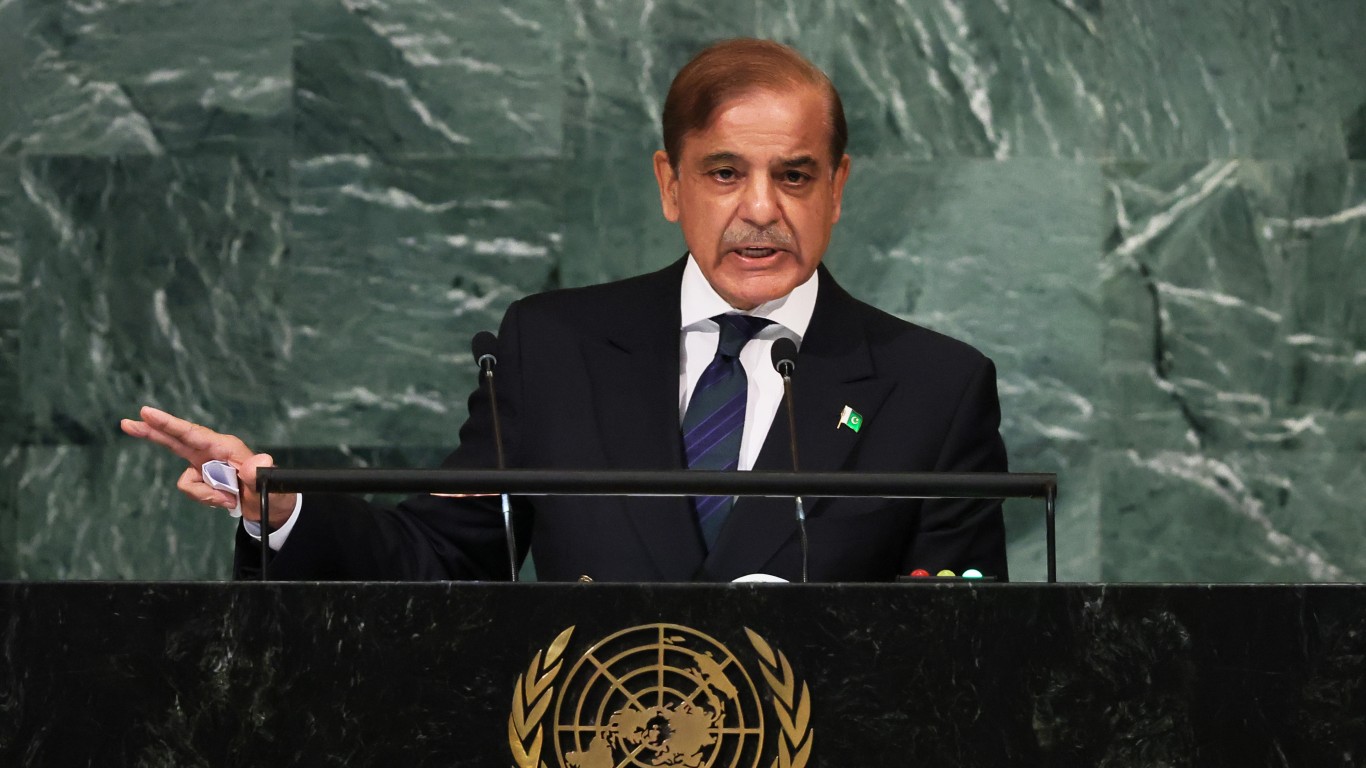
4. Prime Minister Shehbaz Sharif
> Leader of: Pakistan
> Took office: April 11, 2022
> Estimated nuclear arsenal: 165
> First nuclear weapons test: 1998
Pakistan’s nuclear weapons development program began in 1974 following a successful nuclear test conducted by its neighbor and geopolitical rival, India. Pakistan first demonstrated its new nuclear capabilities in 1998 and is now among the nine nations with nuclear weapons.
Today, Pakistan is estimated to have 165 nuclear warheads, a deep concern for world leaders – not only because of the potential for conflict with India, but also the threat of terrorism. Since the Taliban took control of Afghanistan, which shares a 1,640 mile border with Pakistan, fears that a similarly-aligned group could take over of Pakistan’s government and that nuclear weapons could fall into terrorist hands have grown considerably.
Trust between the U.S. and Pakistani governments is shaky. Pakistan is already known to have helped North Korea and Iran with their nuclear weapons programs, and the U.S. has reportedly developed a plan to seize Pakistan’s nuclear stockpiles should terrorist groups ever come close to capturing them. Pakistan’s Prime Minister Shehbaz Sharif has been in power for less than a year. Among the many challenges he faces are a flailing economy and rising terrorism. As far as foreign policy is concerned, the man controlling Pakistan’s nuclear arsenal is importantly expected to maintain amicable relations with India. He might attempt to repair relations with the U.S. but also continue to foster relations with China.
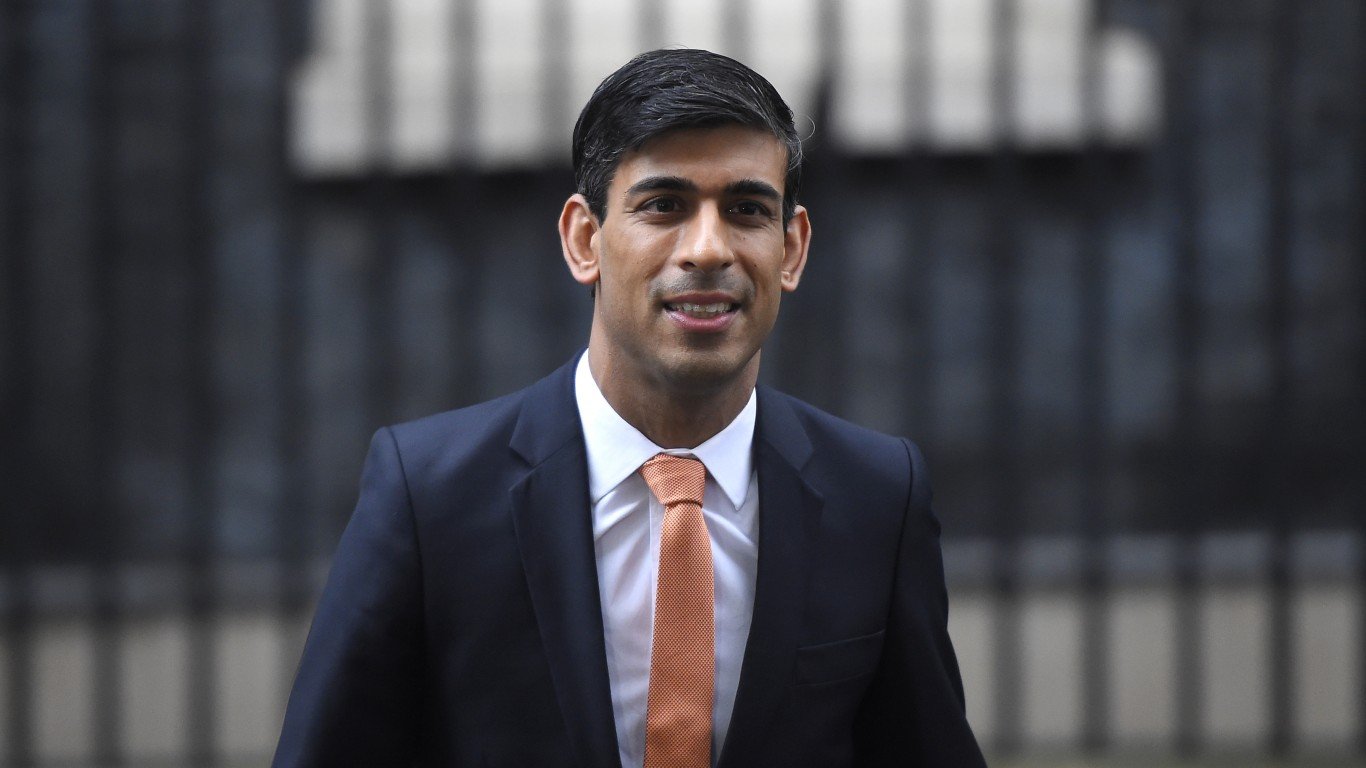
5. Prime Minister Rishi Sunak
> Leader of: United Kingdom
> Took office: Oct. 25, 2022
> Estimated nuclear arsenal: 225
> First nuclear weapons test: 1952
Great Britain began developing a nuclear bomb during World War II and conducted its first successful test in October 1952. Seventy years later, on Oct. 25, 2022, Rishi Sunak went from being a British MP and Chancellor of the Exchequer to the Prime Minister, controlling one of the world’s largest nuclear arsenals.
In addition to ongoing crises at home, international threats would also test the new PM. Russian state TV broadcast in May simulations of Ireland and Britain wiped out by nuclear bombs. While former PM Lizz Truss promised to increase defense spending as a response to Russian aggression in Ukraine, Sunak has not met the pledge.
The U.K. has been in a decades-long Mutual Defence Agreement with the United States, which allows the two allied nations to exchange nuclear materials, technology, and information to mutually benefit from technological advancements. The agreement has been renewed nine times and will be up for renewal once again at the end of 2024.





